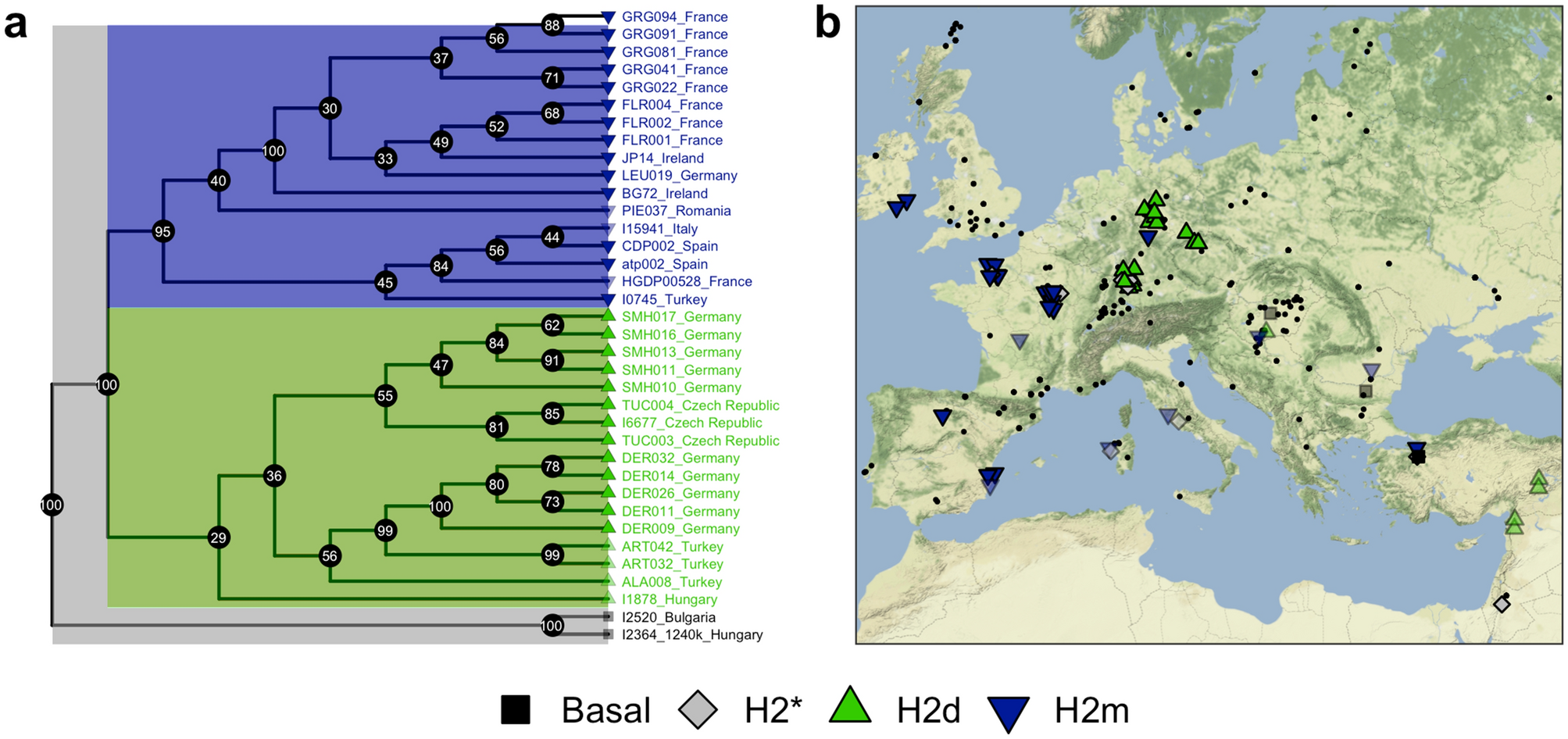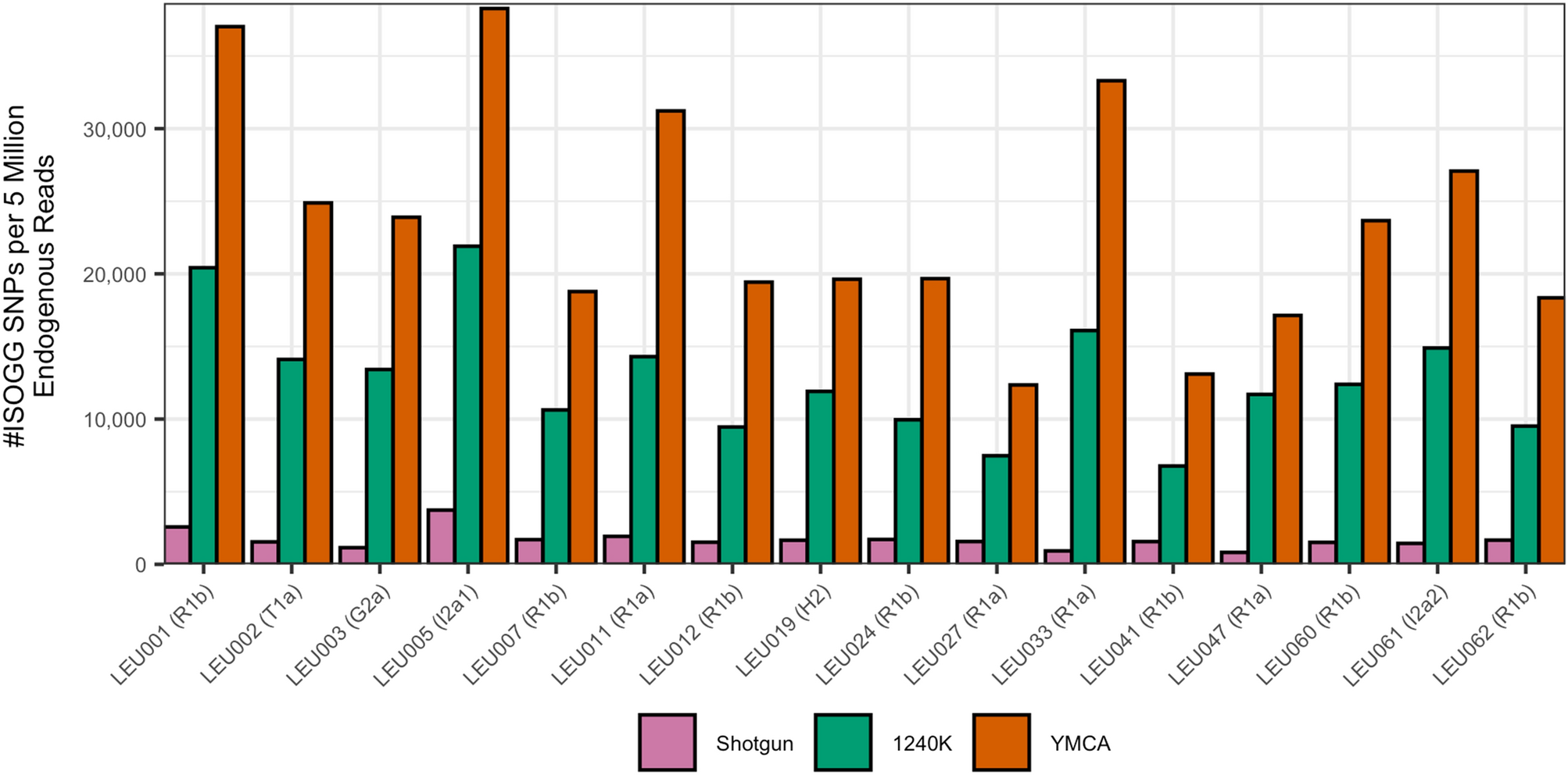Pax Augusta
Elite member
Using Y-chromosome capture enrichment to resolve haplogroup H2 shows new evidence for a two-path Neolithic expansion to Western Europe
Rohrlach, A.B., Papac, L., Childebayeva, A. et al. Using Y-chromosome capture enrichment to resolve haplogroup H2 shows new evidence for a two-path Neolithic expansion to Western Europe. Sci Rep11, 15005 (2021). https://doi.org/10.1038/s41598-021-94491-z
https://www.nature.com/articles/s41598-021-94491-z
Abstract
Uniparentally-inherited markers on mitochondrial DNA (mtDNA) and the non-recombining regions of the Y chromosome (NRY), have been used for the past 30 years to investigate the history of humans from a maternal and paternal perspective. Researchers have preferred mtDNA due to its abundance in the cells, and comparatively high substitution rate. Conversely, the NRY is less susceptible to back mutations and saturation, and is potentially more informative than mtDNA owing to its longer sequence length. However, due to comparatively poor NRY coverage via shotgun sequencing, and the relatively low and biased representation of Y-chromosome variants on capture assays such as the 1240 k, ancient DNA studies often fail to utilize the unique perspective that the NRY can yield. Here we introduce a new DNA enrichment assay, coined YMCA (Y-mappable capture assay), that targets the "mappable" regions of the NRY. We show that compared to low-coverage shotgun sequencing and 1240 k capture, YMCA significantly improves the mean coverage and number of sites covered on the NRY, increasing the number of Y-haplogroup informative SNPs, and allowing for the identification of previously undiscovered variants. To illustrate the power of YMCA, we show that the analysis of ancient Y-chromosome lineages can help to resolve Y-chromosomal haplogroups. As a case study, we focus on H2, a haplogroup associated with a critical event in European human history: the Neolithic transition. By disentangling the evolutionary history of this haplogroup, we further elucidate the two separate paths by which early farmers expanded from Anatolia and the Near East to western Europe.


Rohrlach, A.B., Papac, L., Childebayeva, A. et al. Using Y-chromosome capture enrichment to resolve haplogroup H2 shows new evidence for a two-path Neolithic expansion to Western Europe. Sci Rep11, 15005 (2021). https://doi.org/10.1038/s41598-021-94491-z
https://www.nature.com/articles/s41598-021-94491-z
Abstract
Uniparentally-inherited markers on mitochondrial DNA (mtDNA) and the non-recombining regions of the Y chromosome (NRY), have been used for the past 30 years to investigate the history of humans from a maternal and paternal perspective. Researchers have preferred mtDNA due to its abundance in the cells, and comparatively high substitution rate. Conversely, the NRY is less susceptible to back mutations and saturation, and is potentially more informative than mtDNA owing to its longer sequence length. However, due to comparatively poor NRY coverage via shotgun sequencing, and the relatively low and biased representation of Y-chromosome variants on capture assays such as the 1240 k, ancient DNA studies often fail to utilize the unique perspective that the NRY can yield. Here we introduce a new DNA enrichment assay, coined YMCA (Y-mappable capture assay), that targets the "mappable" regions of the NRY. We show that compared to low-coverage shotgun sequencing and 1240 k capture, YMCA significantly improves the mean coverage and number of sites covered on the NRY, increasing the number of Y-haplogroup informative SNPs, and allowing for the identification of previously undiscovered variants. To illustrate the power of YMCA, we show that the analysis of ancient Y-chromosome lineages can help to resolve Y-chromosomal haplogroups. As a case study, we focus on H2, a haplogroup associated with a critical event in European human history: the Neolithic transition. By disentangling the evolutionary history of this haplogroup, we further elucidate the two separate paths by which early farmers expanded from Anatolia and the Near East to western Europe.




